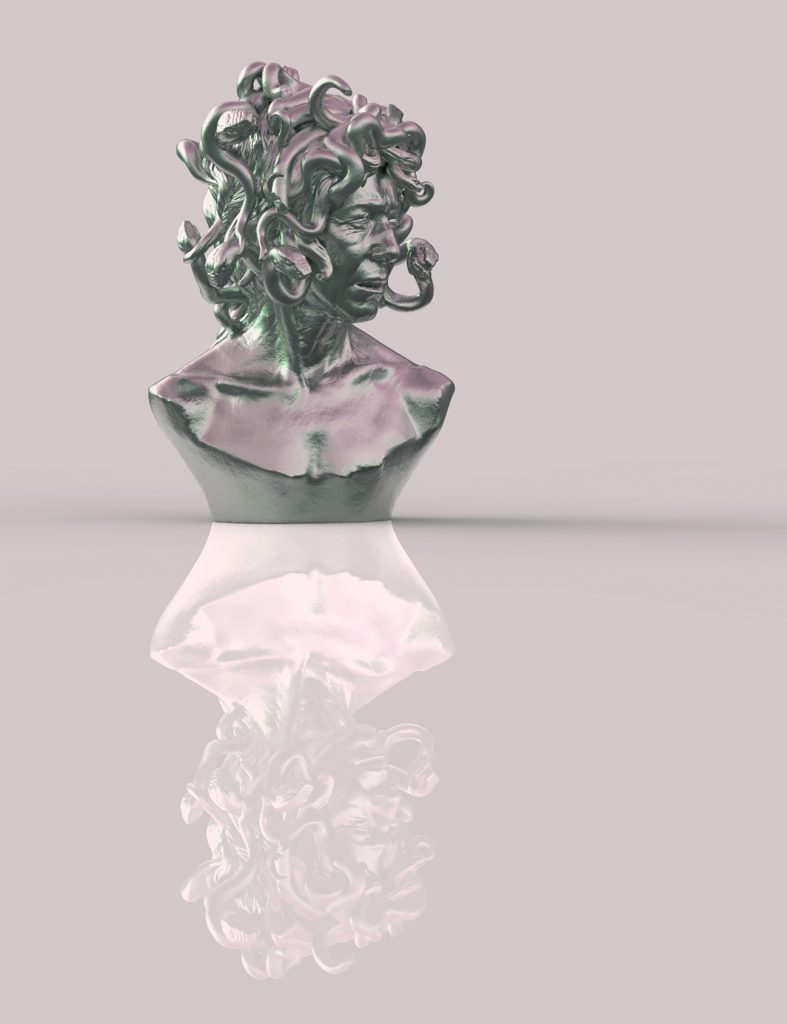
Medusa, 2020
I was attracted to the Medusa for a number of reasons. I found her curious as an icon of feminism. The construction of her as simultaneously symbolizing female rage and men’s fear of female desire, struck me as inconsistent with her origin story, one in which another woman cursed her, blaming her rather than her rapist for her victimization. She was said to have been beautiful before she was cursed by Athena and she was the sole mortal of the three gorgons.
Primo Levi described the shades in the camps, known to him in Auschwitz as Muselmänner, as having set eyes on the gorgon, or Medusa. Those men were not turned to stone; they still breathed the air, but they existed in a grey zone between life and death, already beyond the communications of others. So before the feminists of the 70s adopted her, Medusa also stood for the unspeakable horror witnessed by those in the camps, those so deeply affected by their experiences that they would never be able to rejoin the living.
There is also the question of Medusa’s ugliness to consider. What does it mean in most societies for a woman to be unquestionably ugly? In what ways does ugliness determine how one is treated and to what extent does aging overlap ugliness, especially in the perception of women? And of course, what does it mean to return the male gaze with a gaze that proffers only death?
The image above is a model for a life size marble sculpture. Work on the marble was to have begun in April of this year in Italy, but has been indefinitely postponed due to the outbreak of the corona virus. The sculpture is based on a scan of my face and refers directly to the bust of Medusa by Gian Lorenzo Bernini. The approximate date of his work is 1638-1648. Bernini’s Medusa resides in the Palazzo dei Conservatori in Rome.
My motion capture video, also titled MEDUSA, is derived from the same digital scan.